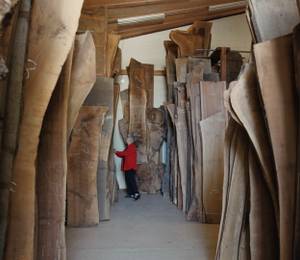Photo caption: Designed by Jeanne Gang and Studio Gang, the Richard Gilder Center for Science, Education, and Innovation project will add exhibition galleries, state-of-the-art classrooms, an immersive digital theater, and a redesigned library as well as reveal more of the Museum’s scientific collections. The project also includes improvements to the adjacent portion of Theodore Roosevelt Park, with a new landscape design by Reed Hilderbrand that adds seating and gathering areas, expands circulation, revitalizes planting, and enhances park infrastructure. Image: Neoscape, Inc. / © AMNH
New York, USA – Ellen V. Futter, President of the American Museum of Natural History, recently announced that the Museum will open the Richard Gilder Center for Science, Education, and Innovation in winter 2022-23, transforming the experience of the entire Museum and greatly advancing public science education for all ages at a time when the role of science in addressing society’s most pressing issues is urgent.
With its spectacular architecture, designed by Jeanne Gang and Studio Gang, the 230,000-square-foot Gilder Center project invites exploration of the fascinating, far-reaching relationships among the Museum’s rich collections, trailblazing research initiatives, educational programs, and exhibits. Physically, the Gilder Center connects many of the Museum’s buildings, creating a continuous campus across four city blocks as envisioned more than 150 years ago. Intellectually, it provides a dramatic embodiment of one of the Museum’s essential messages: that all life is connected.
In announcing the scheduled opening, President Ellen Futter also unveiled new details of key components of the Gilder Center:
- The Kenneth C. Griffin Exploration Atrium, a soaring, four-story-high civic space that serves as a gateway into the Gilder Center, flowing through the Museum to create a connection from Central Park West to Columbus Avenue, and opening onto Theodore Roosevelt Park
- the Gottesman Research Library and Learning Center, a dynamic hub that connects visitors with the Museum Library’s many unparalleled resources and helps patrons navigate flows of information, both print and digital
- the Louis V. Gerstner, Jr. Collections Core, three stories of visible research and collections spaces providing glimpses into the Museum’s collections of millions of scientific specimens and displays offering insight into the evidence and process of scientific discovery in various types of collections, from fossils to insects, with the first and second floors supported by the Macaulay Family Foundation
- the 5,000-square-foot Susan and Peter J. Solomon Family Insectarium, the first Museum gallery in more than 50 years dedicated to the most diverse – and a critically important – group of animals on Earth
- the new year-round, 3,000-square-foot Davis Family Butterfly Vivarium, a permanent exhibition where visitors can mingle with free-flying butterflies, a group that are one of nature’s vital environmental barometers
- and the extraordinary 360-degree Invisible Worlds Theater, an innovative melding of science and art that will give visitors a breathtakingly beautiful and imaginative yet scientifically rigorous immersion into the networks of life at all scales
“As New York City, our country, and the world continue to recover from the pandemic with science leading the way, there has never been a more urgent time to share our Museum’s mission of scientific research and education,” said Ellen V. Futter.
“The Gilder Center uses modern architecture and design, coupled with the most advanced and inventive exhibition and science visualization techniques, to reveal the evidence and processes of science – and, through these, its vital importance and integrity as a force in our society. The Gilder Center will offer a thrilling new destination to welcome back New Yorkers and tourists alike. I salute the extraordinary team that has envisioned this truly transformative project and offer my deepest thanks to the partnership of public and private supporters, led by the late Richard Gilder.”
“Our design works with the Museum’s mission to make their collections visible, legible, and accessible from both inside and out,” said Jeanne Gang, Founding Principal and Partner of Studio Gang. “It creates an exciting new entrance and new connections among existing buildings that will transform visitor flow through the entire campus. Experientially, the architecture intends to kindle the spirit of discovery and offer an invitation to explore.”












